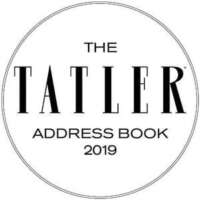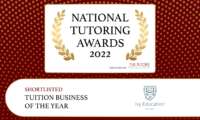Expert Insights
What are Grammar Schools?
Published 31st May 2024 by Alastair

Grammar schools in the United Kingdom offer a unique educational pathway by providing academically rigorous programs aimed at high-achieving students.
Admission is typically determined through the 11+ exam, which assesses a child's Mathematics, English, and Reasoning abilities. Grammar Schools have a rich history dating back to the 16th century, evolving significantly while maintaining their core mission of fostering academic excellence. Today, grammar schools play a crucial role in the UK’s education system, offering an alternative to comprehensive schools. In this article, we’ll explore their historical roots, the selective admission process, the current landscape, and various perspectives on their role and impact in modern education.

Established under the Education Act of 1944, they historically focused on providing a classical education emphasising academic subjects such as Latin and Ancient Greek. Admission to grammar schools is based on academic ability, typically determined by performance in entrance exams known as the 11+.
Compared to other types of schools in the UK, such as comprehensive schools and academies, grammar schools are characterised by their selective admission process and traditionally higher academic standards. They often have a reputation for offering rigorous academic programs and achieving strong academic outcomes for their students. However, criticism of grammar schools includes concerns about elitism and social inequality, as admission based on academic ability may disadvantage students from less privileged backgrounds. Additionally, critics argue that selective education can lead to a lack of diversity within grammar schools regarding socioeconomic status and ethnic diversity.
In recent years, debates about the role of grammar schools in the education system have led to discussions about potential reforms, including proposals to expand access to grammar school education or to phase out selective education altogether in favour of more inclusive models, as we will expand upon below.
If you need extra support with your child's 11+ exam preparation, Ivy Education offers 11+ Practice Papers designed for the most selective Grammar Schools in the country.
Grammar schools, established during the Renaissance period in England, date back to the 16th century. They were primarily intended to provide education in Latin grammar and classical languages. They were typically attended by the sons of wealthy or influential families, preparing them for university education and careers in law, medicine, and the clergy. Centuries passed, and slowly, the very function and purpose of grammar schools changed radically.
By the 19th century, the changes had already started to determine the form grammar schools would take, such as having a multi-diverse curriculum in subjects that were offered besides the classical languages. In this century, the concept of subjects such as mathematics, science, and modern languages coming into grammar schools resulted from changes that society and the economy were undergoing and required. While the Butler Act recognised the Act of 1944, this was a milestone etched in history because it led grammar schools towards the tripartite system in England.
Under this system, grammar schools were designated as one of three types of secondary schools, alongside secondary modern and technical schools. Entrance to grammar schools was determined by the Eleven Plus exam, which aimed to select the most academically able students.
In the modern day, grammar schools continue to uphold their selection policy based on academic performance. However, they have evolved to operate within a more diverse and inclusive educational environment. While they still embrace traditional academic learning, they have also adopted a more holistic approach. This includes incorporating out-of-class learning and providing pastoral care for students' all-round development. This balanced approach reflects the modern grammar school's commitment to academic excellence and student well-being.
The debate about grammar schools rages on, with supporters highlighting their success in fostering academic excellence, and critics pointing to concerns about social inequality and accessibility. Despite these debates, grammar schools remain an integral part of the education system in certain regions, evolving to meet the demands of a modern and dynamic society.
It typically consists of multiple-choice questions covering mathematics, verbal reasoning, English comprehension, and non-verbal reasoning. Recent efforts have focused on aligning the exam more closely with the primary school curriculum to accurately reflect students' knowledge and abilities. This alignment aims to make the exam fairer and more accessible to all students, regardless of their educational background or access to additional tutoring.
The 12+ and 13+ exams are additional selective entry tests used by some grammar schools for students who may not have been successful in the 11+ exam or who wish to apply for entry at a later stage. These exams typically assess similar academic skills to the 11+ but may also include additional subjects or topics to prepare to demonstrate their abilities and potentially gain entry to a grammar school. While not as widely used as the 11+, these exams provide an alternative pathway for students seeking admission to selective schools beyond the traditional entry point.

However, it's important to note that Scotland and Wales do not have grammar schools within their educational systems. In Scotland, the concept of grammar schools was largely replaced by a comprehensive schooling system in the 1970s, while in Wales, grammar schools were abolished following the introduction of comprehensive education policies in the 1960s and 1970s.
This divergence in educational structures means that the selective grammar school system is primarily a feature of the English education system. Despite their relatively small number compared to other types of secondary schools, grammar schools continue to play a significant role in the UK's education landscape, albeit within a context of ongoing debate and scrutiny regarding their place in promoting social mobility and educational equity.
Those in favour of grammar schools argue that they provide opportunities for bright students from diverse socioeconomic backgrounds to access high-quality education. Despite criticisms of elitism, many grammar schools actively seek to admit students based solely on academic ability regardless of their socioeconomic status. This approach aims to create a diverse student body, fostering an environment where students from different backgrounds can learn from each other and thrive academically.
Grammar schools are renowned for their high academic standards and rigorous academic programs. Students attending grammar schools often achieve excellent results in national examinations, reflecting the schools' focus on academic excellence. Moreover, grammar schools boast impressive university admissions rates, with a significant proportion of their graduates securing places at top universities both domestically and internationally. This track record of academic achievement underscores the value of grammar schools in preparing students for future academic and professional success, regardless of their background.
Recent data on social mobility highlights the socioeconomic backgrounds of grammar school students, revealing disparities in access. Initiatives such as pupil premium quotas are in place to address this gap, aiming to increase diversity and offer opportunities to students from disadvantaged backgrounds. However, challenges persist in ensuring equitable access to grammar schools for all socioeconomic groups.
Turning to academic performance, a comparison between grammar schools and comprehensive schools underscores differences in outcomes. Grammar schools often boast higher academic results, partly attributed to their selective nature. However, this raises concerns about fairness and inclusivity, as academically able students are chosen from the outset. This selection process may inadvertently perpetuate inequalities, limiting opportunities for students who do not meet the academic criteria for admission. Addressing these issues requires a nuanced approach that balances academic excellence with social equity.

Starting at least a year before the exam allows sufficient time for thorough preparation and familiarisation with the exam format. Access to quality study materials and a variety of practice papers enables students to develop their skills and confidence in tackling exam questions effectively.
Ivy Education offers tailored support to aid in 11+ exam preparation. With experienced tutors and specialised resources, Ivy Education can provide personalised guidance to address individual learning needs. Tutors can offer targeted instruction, practice sessions, and feedback to enhance students' understanding and performance in key areas. Additionally, our tutors are trained to foster a structured approach, ensuring that students receive comprehensive preparation while maintaining a balanced study schedule, mitigating the risk of burnout and maximising productivity during the exam.
If you need extra support with your child's 11+ exam preparation, Ivy Education offers 11+ Practice Papers designed for the most selective Grammar Schools in the country.
Grammar schools are state-funded secondary schools in the UK that select students based on academic ability, typically determined by an entrance exam known as the 11+.
There are approximately 160 grammar schools in the UK, predominantly located in England, with a few in Northern Ireland and Wales.
Grammar schools differ from comprehensive schools in that they select students based on academic ability, while comprehensive schools accept students of all abilities without entrance exams.
Grammar schools were first established in the 16th century, with the modern system of selective education evolving over time.
Grammar schools typically select students based on their performance in the 11+ exam or similar entrance assessments.
Admission criteria may vary among grammar schools, with some prioritising local students, siblings of current students, or those with specific aptitudes or talents.
Grammar schools often achieve higher academic results compared to comprehensive schools, attributed to their selective intake of academically able students.
The future of grammar schools in the UK is subject to ongoing debate, with discussions surrounding their role in promoting social mobility and concerns about their potential to perpetuate inequality.
Prepare your child for Grammar School admissions with our expertly crafted exam papers.
Find Out More









